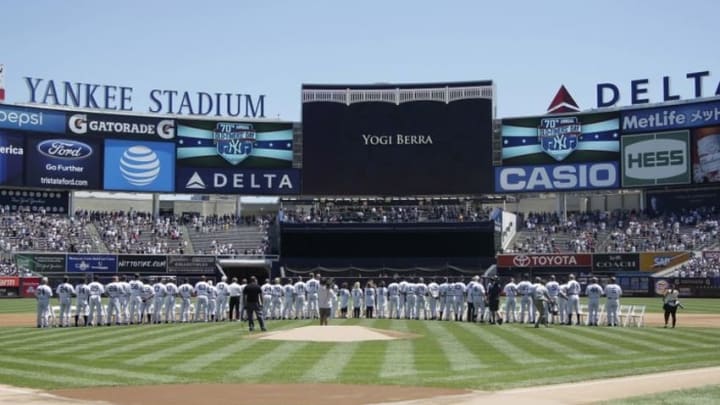
The Yankees greatest run producers of all time – who do you think they are? Take you best guess now, because profiles of five of the biggest run producers are coming up.
The Yankees have been fortunate to have many of the top position players who have ever played the game of baseball. Over the years, the talent they have managed to assemble has produced an unparalleled 27 World Championships and counting. Names of those Yankees greats roll easily from the mouths of Yankees fans around the globe.
But a distinguishing characteristic of baseball is that it is a finite sport. If you score more runs than the other team, your team wins. Which, in turn, has made all others characteristics of the game measurable as well. Which has, in turn, produced the avalanche of sabermetrics, which attempts to measure, for instance, the time it takes for an outfielder to take his first step in pursuit of a fly ball. Or, the angle launch of a batted ball, and all sorts of other goodies that are fun to look at, but completely extraneous from the only stats that matter.
A highly paid position player is measured by his ability to produce runs. And it doesn’t matter if the “launch angle” of the home run he hits is 45 degrees or 118 degrees, as long as the ball disappears over the fence, scoring three runs to win the game for his team. Likewise, a home run can travel 304 ft down the right field line at Yankee Stadium or 475 ft into “the black,” and it still counts the same.
And so, to measure the top Yankees All-Time Run Producers, I’ve taken four of the most common offensive categories (which are):
Career Runs Scored
Career Hits
Career RBI
Career On-Base Percentage
From there, it was a simple matter of checking each player’s ranking in each category, assigning them a number equal to their ranking, totally it all up and achieving a final ranking based on the lowest total.
But, as with anything that attempts to measure “the best,” my empirical study is subject to dispute. For instance, the method favors Yankees with long and continuous careers with the team, while players who played only a portion of their career with the Yankees, even while putting up some incredible numbers, they cannot compete with the ones who have a record of long service with the team.
So while outstanding Yankees like Bernie Williams and Don Mattingly finished in the top ten in total hits, they did not have enough “juice” to maintain that in the other categories. Williams, for example, finished in the top ten in runs, hits, and RBI, only to fall to 13th in OBP, eliminating him from the competition.
Others like Dave Winfield and Alex Rodriguez had some outstanding seasons during their tenure with the Yankees, but simply not enough time with the team to qualify.
With the understanding that I don’t claim to be Bill James, I think you will find these Yankees to be on the mark.
So with that, let’s begin our profiles with the fifth highest rated run producing Yankees, working our way to the top from there.
More Articles About Babe Ruth:
